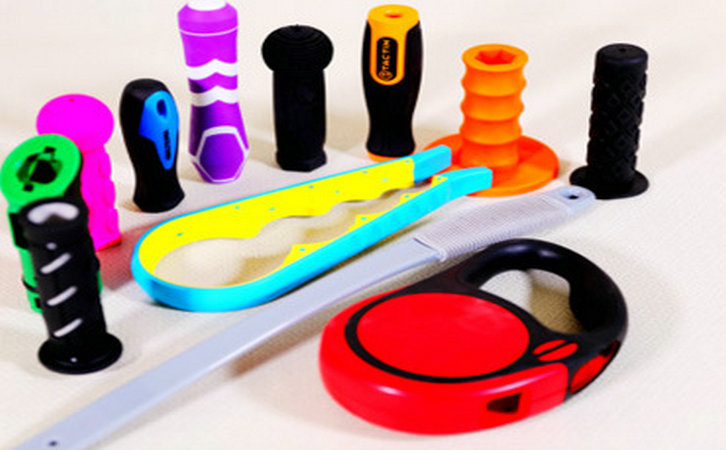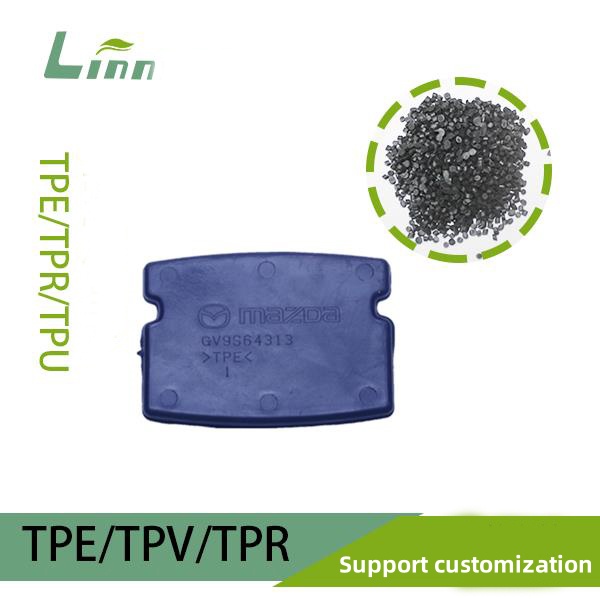As someone who’s been in the rubber and plastics industry for years, I know firsthand how frustrating it can be when materials get mixed up. TPE (Thermoplastic Elastomer) and TPR (Thermoplastic Rubber) are particularly tricky because they look similar and share some performance traits, often causing headaches for factories, procurement teams, and technicians. If you’ve found TPE and TPR mixed together on your production line or in your warehouse, don’t panic. panic. In this article, I’ll draw on my experience to guide you through solving this issue step by step, helping you avoid costly mistakes.
Why Do TPE and TPR Get Mixed Up?
Mix-ups between TPE and TPR are surprisingly common. I recall a time at a factory when a supplier delivered a batch labeled as “TPE,” but testing revealed some of it was TPR, nearly derailing the production line. Here are the main reasons this happens:
Terminology Confusion: TPE is a broad category of thermoplastic elastomers, and TPR is a subset (typically based on SBS or SEBS). However, some suppliers or buyers misuse these terms, leading to mislabeled materials.
Similar Appearance: TPE and TPR look almost identical, especially in transparent or light-colored pellets, making it hard to tell them apart visually.
Poor Warehouse Management: Disorganized storage without strict batch control can result in materials getting mixed.
Supplier Issues: Some suppliers may cut corners by blending materials or using inconsistent formulations, compromising material purity.
If not addressed, these issues can lead to substandard product performance, reduced production efficiency, or even customer complaints. Below, I’ll share practical methods to identify and handle TPE and TPR mix-ups effectively.

How to Distinguish TPE from TPR?
The first step to resolving a mix-up is accurately identifying TPE and TPR. While they share similarities, these methods will help you confirm what you’re dealing with.
1. Visual and Tactile Inspection
Though TPE and TPR look alike, there are subtle differences:
TPE: Feels softer, more elastic, and has a smooth, “silky” surface, especially SEBS-based TPE.
TPR: SBS-based TPR feels slightly harder, less elastic, and may have a slightly sticky surface, particularly in warm conditions.
However, relying solely on touch isn’t foolproof, especially with dyed or additive-treated materials. This method is best for initial screening.
2. Burn Test
The burn test is a quick, hands-on method I’ve used in factories. Take a small sample, ignite it with a lighter, and observe the flame and odor:
TPE (SEBS-based): Burns with a stable yellow or blue-based yellow-tipped flame, producing a mild plastic-like smell with a faint waxy note.
TPR (SBS-based): Burns with a jumpier flame, more smoke, and a strong, pungent styrene odor.
Caution: Perform burn tests in a well-ventilated area to avoid inhaling harmful fumes. For precision, opt for more advanced methods.
3. Solubility Test
If you have access to a lab, a solvent test can help:
TPE (SEBS-based): Low solubility in toluene or dichloromethane, forming a gel-like residue.
TPR (SBS-based): Higher solubility in toluene, resulting in a clearer solution.
This method requires chemical knowledge and safety precautions, like wearing gloves and goggles.
4. Instrumental Analysis
The most reliable approach is using professional equipment, such as Fourier Transform Infrared Spectroscopy (FTIR) or Differential Scanning Calorimetry (DSC):
FTIR: Detects chemical structures, clearly distinguishing SEBS-based TPE from SBS-based TPR through unique spectral patterns.
DSC: Measures glass transition temperature (Tg) and melting points, highlighting differences in thermal properties.
I once used FTIR to resolve a material mix-up dispute for a client, and the results were undeniable, saving a lot of back-and-forth. If your company can afford it, investing in a basic FTIR machine is a game-changer.

5. Performance Testing
If other methods aren’t feasible, tensile or hardness tests can help:
TPE: Higher tensile strength and elongation at break, with a wide hardness range (0A-90A).
TPR: Slightly lower tensile performance, with hardness typically between 20A-80A.
Here’s a comparison table for quick reference:
| Property | TPE (SEBS-based) | TPR (SBS-based) |
|---|---|---|
| Feel | Soft, silky, highly elastic | Slightly hard, sticky, less elastic |
| Burn Odor | Mild plastic smell, waxy note | Pungent, strong styrene smell |
| Solubility | Low in toluene, gel-like residue | High in toluene, clear solution |
| Tensile Strength | Higher | Slightly lower |
| Hardness Range | 0A-90A | 20A-80A |
| Weather Resistance | Excellent (UV and aging resistant) | Moderate (prone to aging) |
Solutions for TPE and TPR Mix-Ups
Once you’ve identified the materials, it’s time to address the mix-up. Here are several solutions tailored to different scenarios:
1. Emergency Handling on the Production Line
If you discover a mix-up during production, act quickly:
Halt Production: Stop the line and inspect raw material bins, feeders, and extruders to prevent further contamination.
Sample Testing: Conduct burn or hardness tests to estimate the mix-up ratio.
Isolate Mixed Materials: Store mixed materials separately, labeled as “pending processing,” to avoid further use.
Adjust Formulation: If the mix-up is minor (e.g., <10%), consult a technician to tweak additives or processing temperatures to minimize performance issues.
I once helped a factory manage a similar issue during a rush order. By quickly sampling and adjusting parameters, we kept losses to a minimum.
2. Optimizing Warehouse Management
Warehouses are a common source of mix-ups. Improve storage with these steps:
Dedicated Zones: Assign separate areas for TPE and TPR, using distinct labels or colored racks.
Batch Tracking: Record supplier details, batch numbers, and test reports for every incoming shipment to ensure traceability.
Regular Audits: Conduct monthly checks to catch labeling errors or storage mix-ups.
I recommend using an ERP system with material codes like “TPE-SEBS-001” and “TPR-SBS-002” to streamline inventory, even for new staff.

3. Communicating with Suppliers
If the mix-up stems from the supplier, proactive communication is key:
Request Documentation: Ask for Material Safety Data Sheets (MSDS) or Certificates of Analysis (COA).
Supplier Audits: If possible, visit the supplier’s facility to review their quality control processes.
Quality Agreements: Include clear material standards in contracts (e.g., TPE must be SEBS-based, TPR must be SBS-based) and specify penalties for mix-ups.
One of my clients recovered full compensation for a batch of defective products caused by supplier mix-ups by enforcing a quality agreement.
4. Repurposing Mixed Materials
If returning mixed materials isn’t an option, consider these reuse strategies:
Low-Demand Products: Use the mixed materials for products with lenient performance requirements, like toy fillers or non-critical components.
Formulation Tweaks: Add toughening agents or compatibilizers to improve mixed material performance. I’ve boosted tensile strength by 15% by adding 5% POE (polyolefin elastomer) to a TPE/TPR blend.
Recycling: Send mixed materials to a granulation facility for reprocessing into lower-grade pellets for non-critical applications.
Note: Always conduct small-scale tests before repurposing to ensure performance meets requirements.
Long-Term Strategies to Prevent TPE and TPR Mix-Ups
Fixing a current mix-up is only half the battle. To prevent future issues, consider these proactive measures:
1. Standardize Procurement Processes
Mix-ups often start at procurement. My recommendations:
Clear Specifications: Include base material type (SEBS or SBS), hardness range, and intended use in purchase orders.
Supplier Vetting: Choose reputable suppliers with certifications like ISO or strong industry reputations.
Sample Testing: Test samples from every shipment before accepting them into inventory.

2. Train Employees
Many mix-ups happen because staff lack material knowledge. Try these:
Regular Training: Hold annual sessions on TPE and TPR differences.
Visual Guides: Create illustrated testing manuals for workshops and warehouses, accessible to all staff.
3. Adopt Automated Testing
If budget allows, invest in automated tools like online infrared spectrometers or hardness testers for real-time material monitoring. These are especially useful for high-end production lines.
4. Stay Connected with Industry Experts
Attend trade shows or forums, such as the Chinaplas Exhibition, to stay updated on material technologies and testing methods. Networking with peers can also yield valuable insights.
Real-World Case Study
To make this more relatable, let me share a real case. Last year, I assisted a medical device manufacturer dealing with a TPE and TPR mix-up. They had sourced transparent TPE for IV tubing but noticed some material became brittle at low temperatures, compromising product safety.
Using FTIR, we found about 20% SBS-based TPR in the batch. Since returning the material was costly, we:
Repurposed the mixed material for non-medical soft tubing.
Adjusted extrusion processes, lowering temperatures to reduce TPR degradation.
Negotiated with the supplier, securing 50% compensation and requiring COAs for future deliveries.
The client not only minimized losses but also revamped their procurement process to prevent future mix-ups.

Frequently Asked Questions
To wrap up, here are answers to common questions to help you further:
Q1: Does mixing TPE and TPR affect product performance?
A: Yes. SEBS-based TPE offers better weather resistance and elasticity for demanding applications, while SBS-based TPR is less durable. Mixing them can cause faster aging or reduced strength, depending on the ratio and application.
Q2: Are there portable devices to quickly distinguish TPE and TPR?
A: Handheld infrared spectrometers, like Thermo Fisher’s TruDefender, are precise but expensive. For budget-conscious teams, burn tests are the quickest alternative.
Q3: Can mixed materials be recycled directly?
A: Yes, but test their performance first to ensure suitability. Work with a professional recycling facility to reformulate based on material properties.
Q4: How can I prevent supplier mix-ups?
A: Use detailed quality agreements, require test reports with every batch, and periodically audit supplier quality controls.
Final Thoughts
Dealing with TPE and TPR mix-ups can be a real headache, but with the right identification techniques, practical solutions, and preventive measures, you can keep disruptions to a minimum. As someone who’s seen the impact of these issues on product quality and customer trust, I hope this guide gives you the tools to tackle the problem confidently. If you have more questions, feel free to reach out—I’m happy to help you navigate the complexities of this industry!




